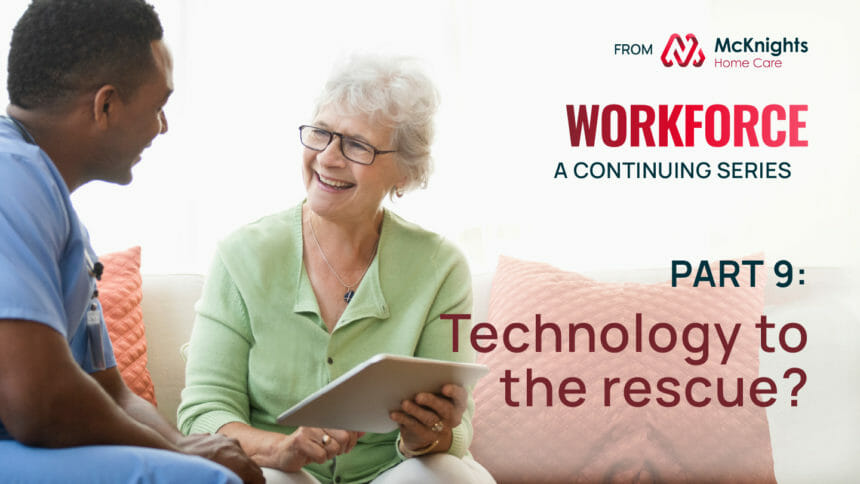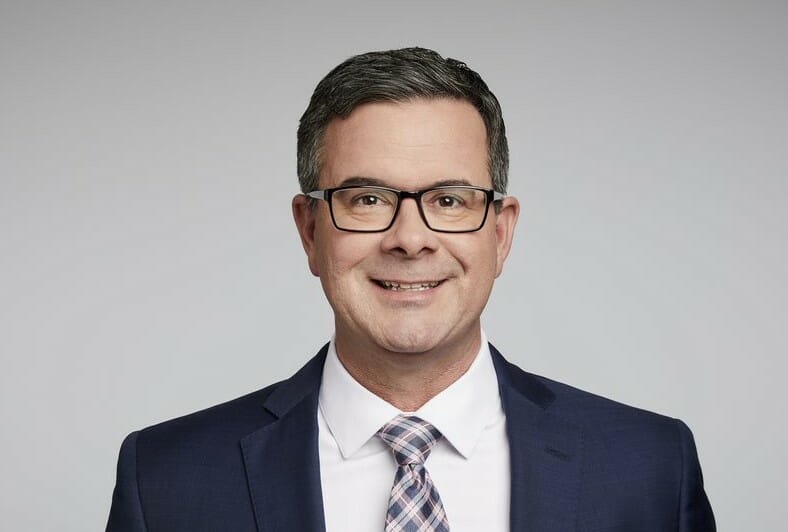
Technology has replaced workers on factory floors, in toll booths and behind fast food counters. But can it replace the high-touch services home care workers provide their patients? That is the question many home care agencies are asking themselves as they look for ways to address the current caregiver shortage and fill up to 7 million direct care jobs over the next decade.
Technology may not necessarily replace caregivers, but some agencies are using it to fill care gaps. Artificial intelligence (AI) is one piece of the puzzle. Through a collaboration with in-home connected care platform Livindi, New Jersey-based Fellowship Senior Living recently launched the Fellowship Connected Living Platform . The smart home platform gives users access to a personal care coordinator and patient care coordinator via a tablet that acts as a concierge service to meet medical needs, such as scheduling doctors’ appointments and other needs, such as scheduling rides.
Seniors also receive three in-home sensors that use artificial intelligence to monitor and detect changes in living patterns through motions. For instance, the system can alert a family member or care provider if someone is getting up several times during the night, indicating a possible medical problem.
Elizabeth Fandel, Fellowship Senior Living’s senior vice president of home- and community-based services, told McKnight’s Home Care Daily Pulse the system is helping the nonprofit provide support to everyone who needs it, while making optimum use of caregivers.
“For the individual who needs the minimal amount of hands on care — maybe assistance with a shower a few days a week, putting groceries away, doing some light laundry — we are going to say if you need that short visit, we can provide that service at a shorter number of hours per visit if you have Livindi,” Fandel explained.
AI can also collect and interpret data about what is going on in a home to help agencies determine how to best meet the needs of clients and caregivers. Austin, TX-based Sensi AI uses audio sensors that collect data from existing audio hardware in the home, such as smartphones or security cameras, then synthesizes the information through AI. Like the Livndi system, the Sensi AI system can alert family members and caregivers to emergencies, but it also gives agencies a window into how it can best serve the client.
“If a client has three or four caregivers, it’s going to let the agency know which caregiver has the best rapport or chemistry with that client, so they can staff at the best of their ability to increase satisfaction for both caregiver and client,” Sensi AI co-founder and Chief Revenue Officer Alon Brener told McKnight’s Home Care Daily Pulse.
Make me a perfect match
Technology is helping home care providers in other ways. San Francisco-based Honor Technology developed a workforce management and technology tool that matches caregivers, known as care pros, to clients. An app allows caregivers to choose their schedules and matches them with clients who match their skills. Honor founder and CEO Seth Sternberg told McKnight’s Home Care Daily Pulse the technology empowers caregivers in a way that increases job satisfaction and retention.

“Care pros can literally flag in our app when they believe the care plan is out of date for some reason,” Sternberg explained. “That triggers a reassessment of that client and then that care plan is updated and then the care pro sees a more updated care plan.”
As home health leaders embrace technology as one solution to the caregiver crisis, investors are responding. Earlier this year digital health advisory firm Summit Health estimated investors funneled $11.8 billion in digital health platforms in 2021, a 47% increase over 2020.
Cautious approach
But despite the increased use of technology among home care firms, some companies are proceeding with caution. Enhabit Home Health and Hospice is a good example. It utilizes AI technology as a tool to collect data on patients to determine the best way to deliver care.
“We’ve definitely seen through the pandemic and through the staffing challenges that we are much better equipped to care for patients and still drive great outcomes,” Bud Langham, Enhabit’s executive vice president of clinical excellence and strategy, told McKnight’s Home Care Daily Pulse.
However, Langham said he’s more skeptical of other technologies, like remote patient monitoring, that might be used to replace caregivers in the home.

“We’ve done several pilots; we’ve done some small-scale stuff, but nothing to scale yet because we have not found that just-right technology for us that allows us to take care of patients in a better way and produce better outcomes in a predictable way and to do so at a cost profile that makes sense to the business,” Langham asserted.
Arosa CEO Ari Medoff is also taking a measured approach to technology at his Durham, NC-based home care company. He told McKnight’s Home Care Daily Pulse in a recent Newsmakers Podcast technology has its place in the home care industry, but he emphasized it can’t replace the intimate connection that human caregivers provide their clients.
“We’ve got to have a certain amount of humility … and understand that it is part of a service, part of an offering, part of a business model,” Medoff said.
Editor’s note: In terms of labor problems, there has never been a time like today. In this ongoing series, McKnight’s Home Care will explore the various facets of the workforce shortage, how home care is responding to it and the innovation that is propelling the field forward with new and sometimes unconventional solutions. Read a new installment each month until the end of the year.



